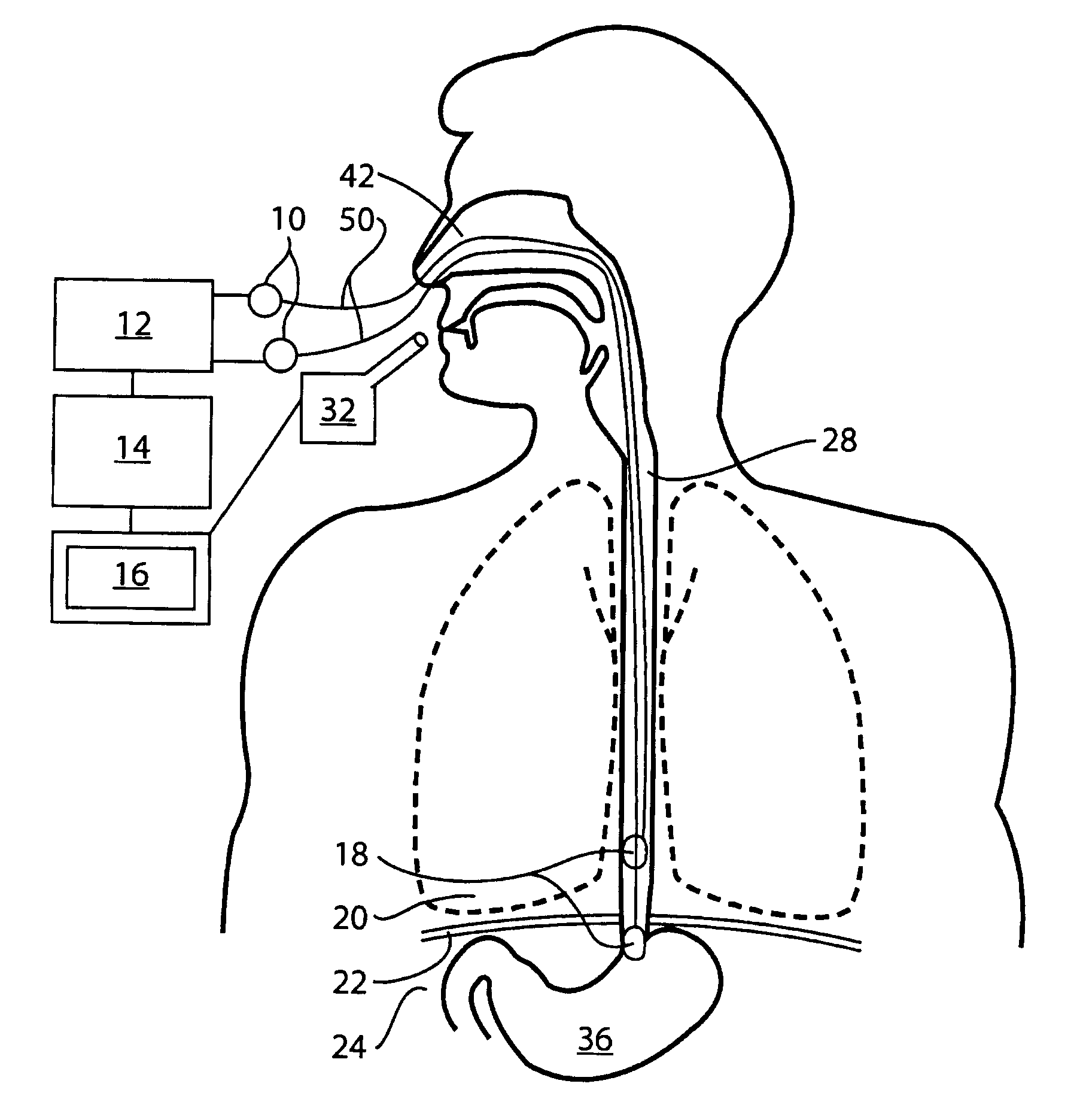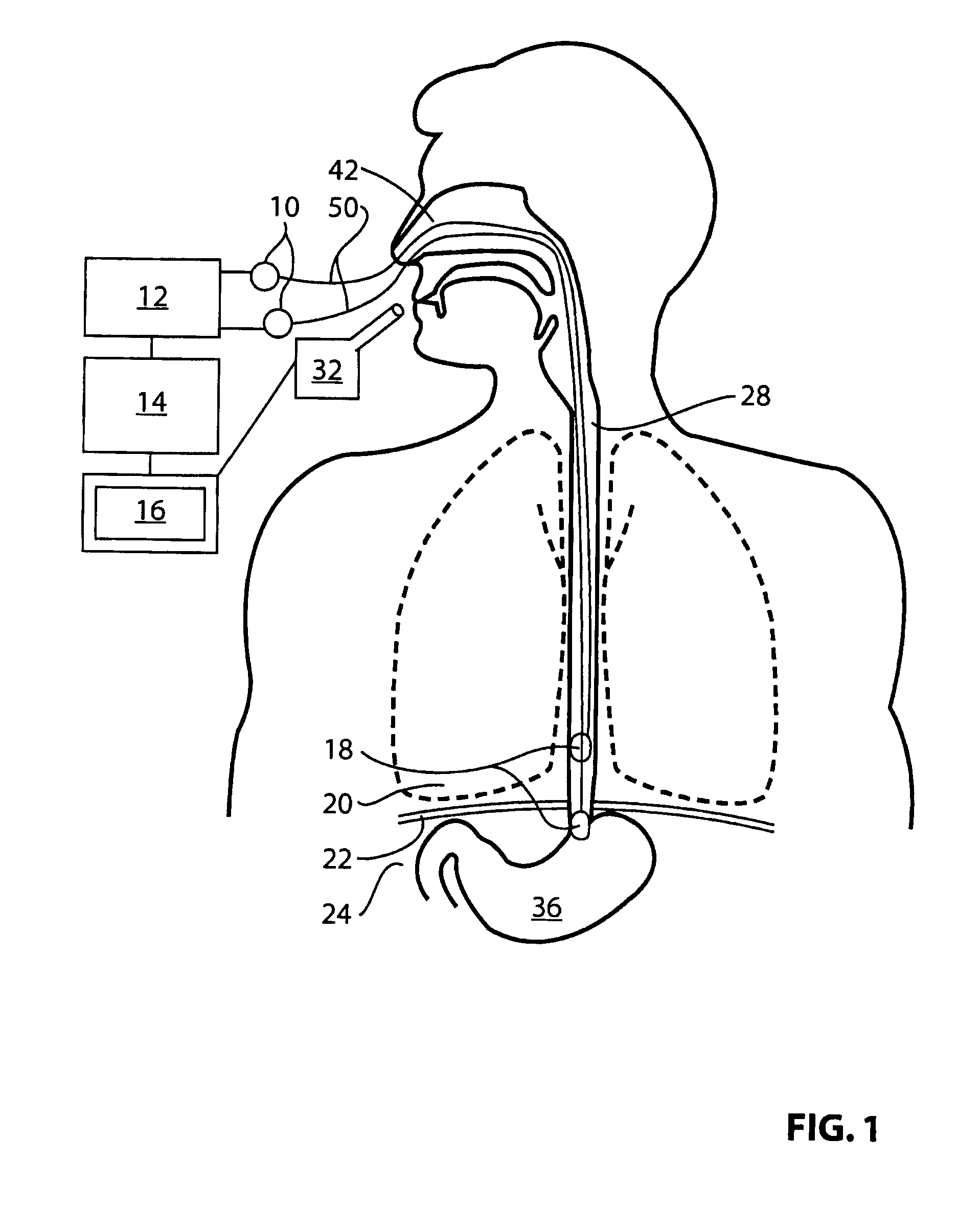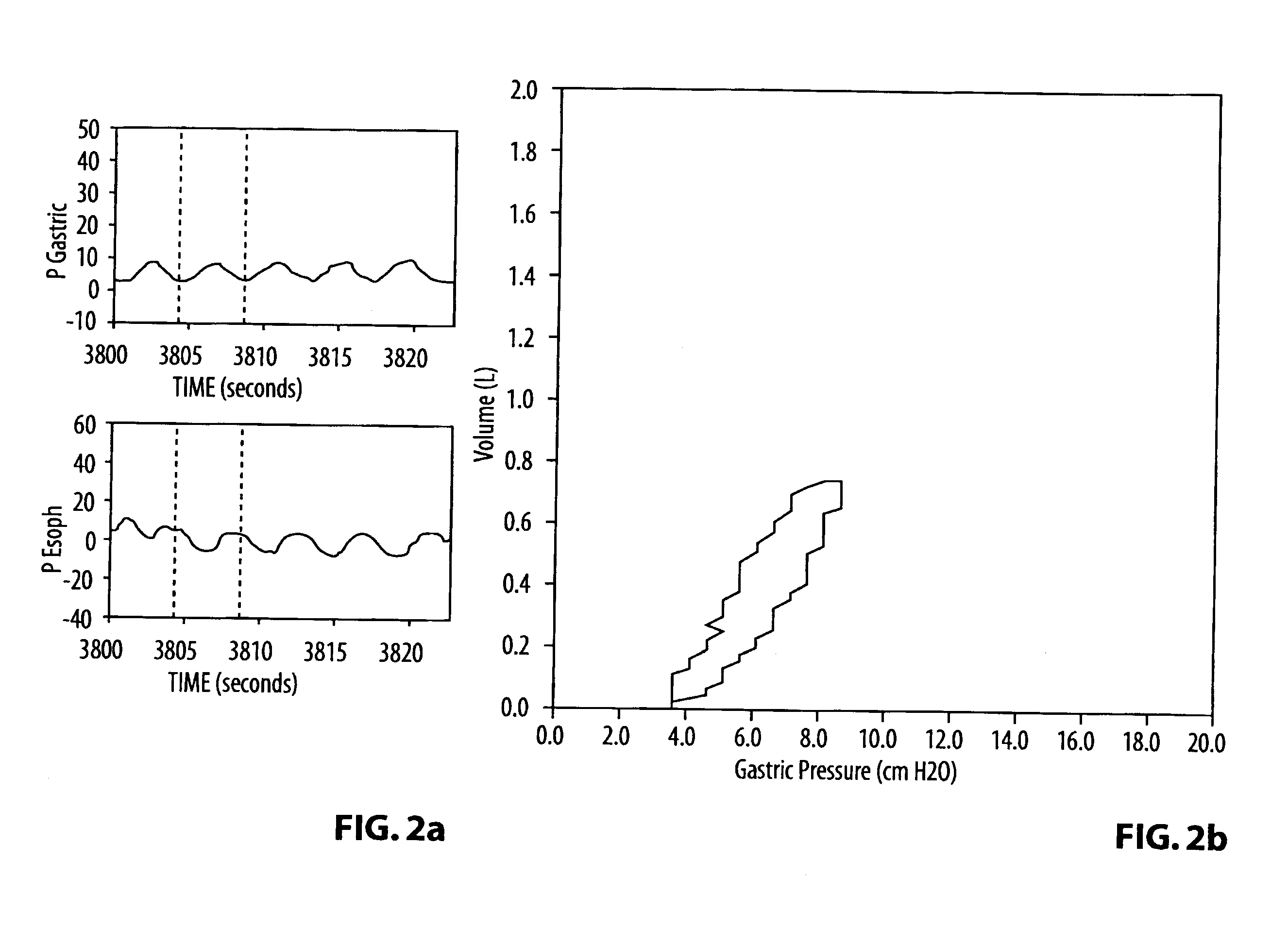Relative contribution of thoracic muscles to breathing
a technology of thoracic muscles and relative contributions, applied in the field of evaluating the relative contribution of thoracic and diaphragmatic muscles to breathing, can solve the problems of clear fatigue, insufficient air supply, and exhaustion
- Summary
- Abstract
- Description
- Claims
- Application Information
AI Technical Summary
Benefits of technology
Problems solved by technology
Method used
Image
Examples
Embodiment Construction
[0035]According to one embodiment of the invention, gastric pressure can be used to estimate intra-abdominal pressure. Optionally, as shown FIG. 1, gastric pressure is obtained by passing a tube 50 through the mouth or nasal cavity 42 and directing it into the stomach 36. These types of tubes are commercially available as “pediatric feeding tubes”, “naso-gastric tubes”, “gastrostomy tubes”, “esophageal balloons”, “gastric balloons” and others. Once the distal end of the tube is in the stomach 36, the pressure in the stomach can be measured by attaching the proximal end of the tube to a pressure transducer 10.
[0036]In one embodiment, bladder pressure can be used to estimate intra-abdominal pressure. This can be optionally accomplished by using an in-dwelling catheter to measure pressure across the bladder wall.
[0037]There are many optional devices to measure tidal volume, including “mass flow sensors”, “pneumotachographs”, “turbines”, and Pitot tubes.
[0038]In, one embodiment of the i...
PUM
 Login to View More
Login to View More Abstract
Description
Claims
Application Information
 Login to View More
Login to View More - R&D
- Intellectual Property
- Life Sciences
- Materials
- Tech Scout
- Unparalleled Data Quality
- Higher Quality Content
- 60% Fewer Hallucinations
Browse by: Latest US Patents, China's latest patents, Technical Efficacy Thesaurus, Application Domain, Technology Topic, Popular Technical Reports.
© 2025 PatSnap. All rights reserved.Legal|Privacy policy|Modern Slavery Act Transparency Statement|Sitemap|About US| Contact US: help@patsnap.com



